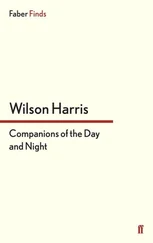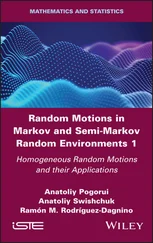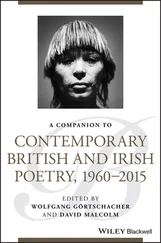A Companion to Motion Pictures and Public Value
Здесь есть возможность читать онлайн «A Companion to Motion Pictures and Public Value» — ознакомительный отрывок электронной книги совершенно бесплатно, а после прочтения отрывка купить полную версию. В некоторых случаях можно слушать аудио, скачать через торрент в формате fb2 и присутствует краткое содержание. Жанр: unrecognised, на английском языке. Описание произведения, (предисловие) а так же отзывы посетителей доступны на портале библиотеки ЛибКат.
- Название:A Companion to Motion Pictures and Public Value
- Автор:
- Жанр:
- Год:неизвестен
- ISBN:нет данных
- Рейтинг книги:3 / 5. Голосов: 1
-
Избранное:Добавить в избранное
- Отзывы:
-
Ваша оценка:
- 60
- 1
- 2
- 3
- 4
- 5
A Companion to Motion Pictures and Public Value: краткое содержание, описание и аннотация
Предлагаем к чтению аннотацию, описание, краткое содержание или предисловие (зависит от того, что написал сам автор книги «A Companion to Motion Pictures and Public Value»). Если вы не нашли необходимую информацию о книге — напишите в комментариях, мы постараемся отыскать её.
A Companion to Motion Pictures and Public Value
Companion
A Companion to Motion Pictures and Public Value
A Companion to Motion Pictures and Public Value — читать онлайн ознакомительный отрывок
Ниже представлен текст книги, разбитый по страницам. Система сохранения места последней прочитанной страницы, позволяет с удобством читать онлайн бесплатно книгу «A Companion to Motion Pictures and Public Value», без необходимости каждый раз заново искать на чём Вы остановились. Поставьте закладку, и сможете в любой момент перейти на страницу, на которой закончили чтение.
Интервал:
Закладка:
The filmic romance had two layers, the love for music and the love story between a Turkish princess and an Iranian singer in Paris. The Love-Stricken became the first post-revolutionary musical movie. It did not receive any national awards, but it was a fine example of the introspective Iranian art-house cinema. Hossein Alizadeh, the composer of the songs for the movie recalls that one of the main objectives of Hatami in making the film was to familiarize people with Persian musical instruments and to reconcile the cinema with music. (Alizadeh 2013)
An analytical review of Iranian art-house cinema in the late 1980s and onward shows that when motion pictures were threatened by a fundamentalist agenda, they became aesthetically and artistically richer. In a self-reflexive mode, filmmakers started to deepen their point of view into the smaller details of life to discover the poetry of life. As the war became more combative and more people were killed, some filmmakers were zooming in on the mundanity of everyday life to evade taking part in agitating Iranian society in the way the propagandist war movies did. Where Is the Friend’s House? (1987, dir. Abbas Kiarostami) concentrated on the world of children in a remote village far from the war zone. In this film, Kiarostami took his camera out in nature in order to evade censorship and to avoid filming an unrealistic domestic life with veiled women and the awkward Islamized interactions between actors. The whole story revolved around the notebook of a friend, taken by mistake, and the journey to find the friend’s house. After the success of Kiarostami’s Koker trilogy, more filmmakers were encouraged to make Children’s Movies to evade governmental restrictions related to the visualizing of adult life. Bashu: The Little Stranger (1989, dir. Bahram Bayzai) was also made during the Iran-Iraq war. It implicitly defies the official narrative of war. Bayzai’s film highlights the crucial role of women during wartime and vividly shows the suffering of war-stricken refugee children. Bashu did not rehearse the customary practice of “Holy War” movies in romanticizing aggressive energy, war, and violence.
In a subtle act of defiance, female filmmakers started to explore the hidden sides of society, or what the official narrative was trying to evade, eliminate, or deny. In Hidden Half (2001), Tahmineh Milani uses the genre of melodrama to picture the participation of the Iranian left party and women (both absent in the official narrative) in the 1978 revolution. Through a letter left in her husband’s luggage, the wife of a revolutionary judge reveals her premarital love and her previous political activities to her husband in the hope that he re-examines the death sentence of a female political prisoner. The film criticizes the narrow strictures of Islamic law and the old patriarchal values that required premarital chastity of women and their emotional and economic dependence on their spouses after marriage. Unlike previous Islamized movies, members of the Iranian left are not pictured as villains. In fact, Milani chose the angel-faced Niki Karimi to play the role of the leftist Fereshteh. After limited screenings of The Hidden Half , the officials found it offensive. The movie was banned and Milani was arrested.The subject matter and the film stylistics made the second part of Milani’s Fereshteh trilogy one of her most acclaimed movies. The portrayal of leftist activists who had a role in the culmination of the revolution, but later were banished by the dominant extremists made Hidden Half a rare film in re-historicizing the forgotten participants of the revolution. In 1988, the Islamic government initiated mass executions of political prisoners across Iran. Thousands of prisoners were executed extrajudiciously. At a time when even talking about the mass executions was seen as transgressive, Milani’s seemingly innocent melodramatic story caused an uproar among the authorities. She was arrested by the hardline revolutionary court, but later released through the interventions of the reformist president Mohammad Khatami.
There are many more movies made in the early to mid-2000s that gradually reimagined social issues of the Iranian society in a more tangible manner. Still, they could not be considered as Third Cinema because their language was not vehemently political. Some of the most prominent examples are A Time for Drunken Horses (2000, dir. Bahman Ghobadi), Mix (2000, dir. Dariush Mehrjui), Ten (2002, dir. Abbas Kiarostami), Women’s Prison (2002, dir. Manijeh Hekmat), and Crimson Gold (2004, dir. Jafar Panahi). The aesthetics of a bent cypress revived Iranian art-house cinema and gave it a novel artistic value. By employing an understated, metaphorical humanist language, Iranian filmmakers were able to maintain a more truthful artistic expression. It allowed them to stay present in the cultural scene. Their subtle yet uncompromising approach gave visibility to sociocultural issues. The curved sarv symbolizes the attitude toward artistic expression in Iranian cinema in the first 30 years after the revolution, while a social realist cinema with a more critical and explicit language emerged, from the 2010s onward.
An Outcry in Silence: A Hope for Heech /Nothingness
The Iranian auteur films in the areas of art-house cinema (with a more restrained and metaphorical structure) and social realism (with a bold and critical voice) have a common trait: They both communicate a deep-seated, ironic, and (at times) radical hope for heech/ nothing. The idea of hoping for nothing, an irrational, faint hope in the midst of darkness, was already projected in Persian mystic philosophy and poetry, as well as the secular poetic discourses. Considering the profound connection between Iranian cinema and Persian poetry, it is no surprise that the concept of a poetic “hope for heech ” has informed the Iranian cinema (see Sheibani 2011). Before analyzing the notion of a “hope for heech ” in the cinema, the concept of heech or nothingness should be examined.
In the Persian language, heech means “nothing” and “nothingness.” However, in poetic and philosophical discourses (mystical and secular), there are multiple semantic implications associated with the concept of heech or nothingness. Nothingness does not necessarily suggest “death,” “destitution,” “annihilation,” or “non-existence.” In a mystic journey to find the Truth, reaching the state of nothingness means freeing the Self from the shackles of one’s ego, so as to transcend to the ultimate Truth. Mystics could only achieve wholeness (the state of Ensan-e Kamel or “perfect human being”), if their souls were cleansed from distractions, such as materialistic interests that retain the soul from embracing pure love. In the world of both the secular lover and a spiritual lover or Sufi, heech/ “nothing” is more than “nothing.” “ Heech is the ‘thirst,’ ‘enthusiasm’, and ‘desire’ to uncover the truth” (Pazyar 2018). Heech could also turn into an infatuation for someone or something, or a desire to be united with a beloved. The Iranian poet and thinker, Sa’di Shirazi stated that if the whole world is reduced to nothing, or to ruins, as long as lovers are united, that “nothingness” can turn to wholeness (Rubayee no. 10). 4In a similar manner, another prominent Medieval poet, Hafez, takes solace in drinking wine with a friend in a secluded shelter amidst the absurdity and nothingness of the whole world (Ghazal no. 298). Iranians found consolation and comfort in savoring the present moment, knowing that the tangible world, the whole universe, is heech/ nothing, after all. This idea is embodied in the rubaiyat of Omar Khayyam (Rubayee no. 101). For Khayyam, nothingness is the point of union. It merges opposing sides, such as life and death (Rubayee no. 7), determinism and free will (Rubayee no. 5), and absurdity and desire (Rubayee no. 29). Heech , could mean the infusion of all and none that lead us to the hidden world, a domain beyond our comprehension (see Tadayon 2012).
Читать дальшеИнтервал:
Закладка:
Похожие книги на «A Companion to Motion Pictures and Public Value»
Представляем Вашему вниманию похожие книги на «A Companion to Motion Pictures and Public Value» списком для выбора. Мы отобрали схожую по названию и смыслу литературу в надежде предоставить читателям больше вариантов отыскать новые, интересные, ещё непрочитанные произведения.
Обсуждение, отзывы о книге «A Companion to Motion Pictures and Public Value» и просто собственные мнения читателей. Оставьте ваши комментарии, напишите, что Вы думаете о произведении, его смысле или главных героях. Укажите что конкретно понравилось, а что нет, и почему Вы так считаете.












